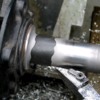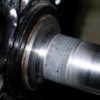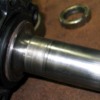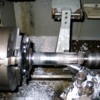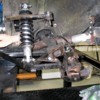Hi guys.
Having just imported my car from Boston to Melbourne, Australia, I put it up on the hoist for a once over. With the car jacked up I was able to lift the rear left wheel about 1/2" up and down, but not side to side. This indicated to me a wheel bearing issue, but researching the history of my car it has had all 4 corners rebuilt in the last year.
I understand the hub is like an older Ferrari with a ring nut requiring a special tool at the rear of the hub behing where the CV or universal attaches.
Is there any other adjustment other than this ring nut, and if not, can anybody tell me the torque setting for the ring nut? I have a paper copy of the service manual, but this doesnt give me the torque figure for this nut.
Any advice appreciated. Thanks.
Original Post




